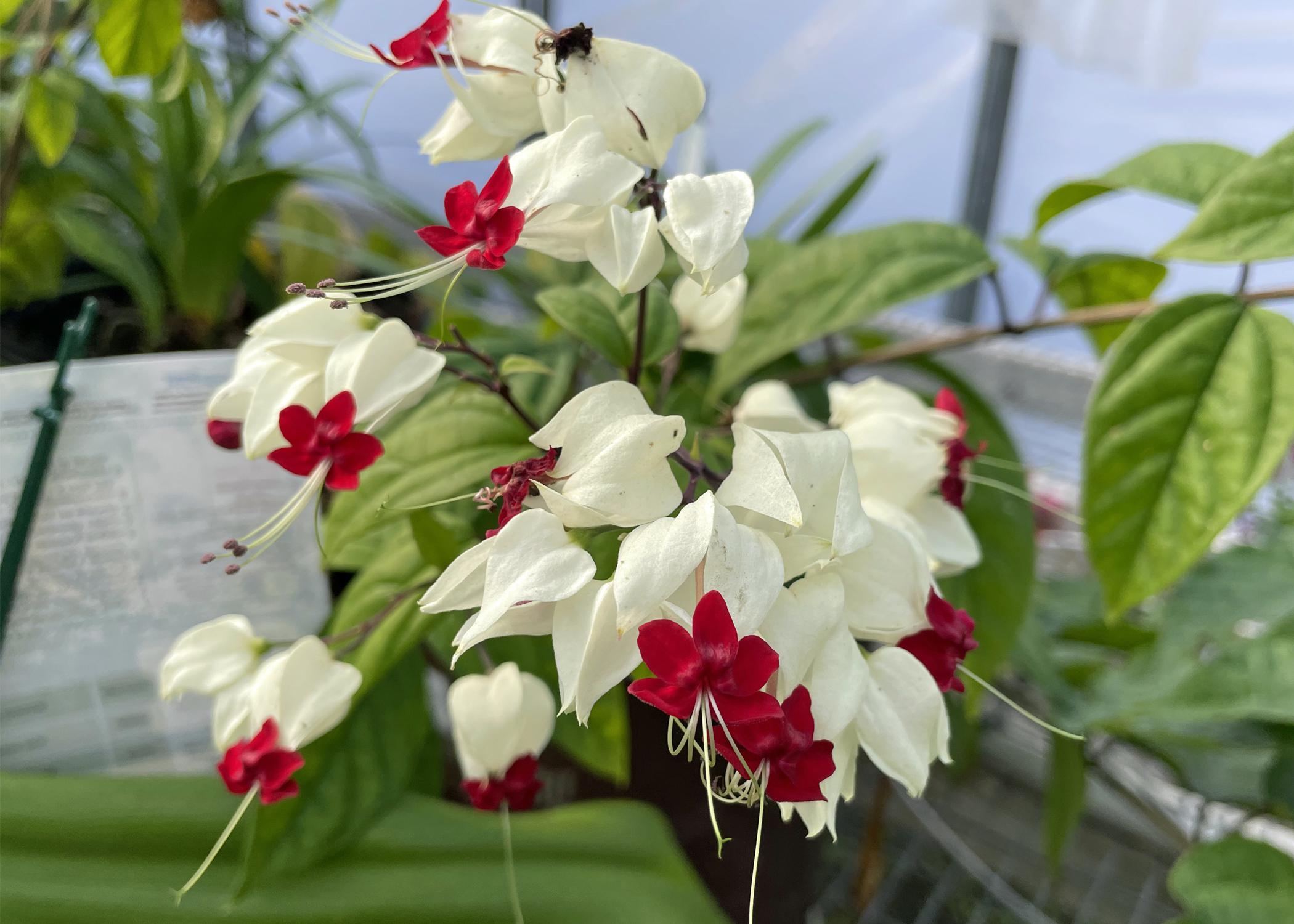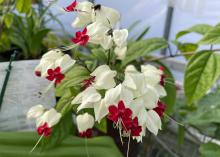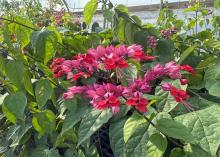Bleeding Heart vines show Valentine love
As we approach Valentine’s Day, you may be searching for the perfect gift for your plant-loving Valentine. I recommend you consider a Bleeding Heart vine celebrated for its beautiful flowers, which perfectly symbolize love and passion.
The Red Bleeding Heart vine is a true showstopper, with vivid red, tubular blooms surrounded by delicate pink, papery bracts that create a dramatic display. Mine starts producing clusters of flowers in late fall each year.
In contrast, the White Bleeding Heart vine is equally captivating, featuring bright red blossoms enclosed by striking white bracts that add bold elegance to the garden setting. It blooms abundantly in the cooler fall and winter months and produces cascading clusters of flowers that attract butterflies and hummingbirds, infusing spaces with life and beauty.
Bleeding Heart vines are vigorous growers, capable of climbing 10-15 feet when supported by a trellis, pergola or arbor. They thrive in hanging baskets, where their cascading blooms can drape gracefully.
To ensure healthy growth, plant them in bright, indirect light or a spot with morning sun and afternoon shade. Indoors, place them near an east- or south-facing window for optimal light.
These vines prefer well-draining, slightly acidic soil rich in organic matter. They appreciate consistent moisture, although it’s essential to avoid waterlogged roots. Water deeply when the top inch of soil feels dry and mist the leaves or use a humidifier to maintain high humidity, especially when grown indoors.
As tropical plants, Bleeding Heart vines thrive in temperatures between 65 and 85 degrees. They are hardy in U.S. Department of Agriculture zones 9-11, where they can be grown outdoors year-round.
I live in USDA Zone 8, and my Bleeding Heart vines die back to the ground during the winter and sprout from the roots the next spring. In colder climates, they make excellent potted plants that can be brought indoors during cold weather.
During the growing season, feed them every two weeks with a balanced, water-soluble fertilizer. Reduce feeding in the fall and winter when growth slows.
I recommend you prune your vines after flowering to encourage bushier growth and to keep the plant looking tidy. Occasional trims during the growing season can help control legginess.
Though relatively pest-resistant, these vines may occasionally attract aphids, spider mites or whiteflies and can be treated with insecticidal soap or neem oil.
With their lush green foliage, heart-shaped blooms and vibrant colors, Bleeding Heart vines are perfect for symbolizing enduring love and devotion. Their ability to thrive both indoors and outdoors means they can be enjoyed in a variety of settings.
Whether placed on a sunny patio or bright windowsill, these vines will reward their owner with an abundance of flowers that grow more and more beautiful with care -- just like love itself.
This Valentine’s Day, give a gift that will flourish for years to come.





